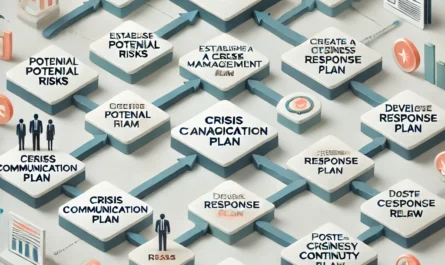Employee engagement has become one of the most crucial pillars of business success. A company with engaged employees enjoys higher productivity, increased innovation, and better overall morale. But fostering employee engagement doesn’t happen by chance—it requires a thoughtfully designed business strategy. This article dives deep into the essentials of building a business strategy that boosts employee engagement, ensuring that companies not only attract top talent but retain them in the long term.
Understanding Employee Engagement
Employee engagement refers to the emotional commitment employees have toward their organization and its goals. Engaged employees feel invested in the company’s success, contributing more effort and demonstrating higher levels of innovation and creativity. Organizations with highly engaged employees see lower turnover rates, higher customer satisfaction, and improved business performance. Creating a strategy that fosters engagement requires more than occasional incentives; it needs to be woven into the fabric of your company culture and goals.
The Role of Leadership in Fostering Employee Engagement
Leadership plays a pivotal role in shaping an environment where employee engagement can flourish. Leaders are not just responsible for overseeing operations; they must also cultivate an atmosphere where employees feel valued, heard, and supported. An engaged leader sets the tone for the rest of the team by demonstrating commitment to both business objectives and employee well-being.
Leaders should embody transparency, accountability, and open communication. It’s essential for them to listen actively, recognize employee achievements, and inspire teams with a clear and compelling vision. Leaders who actively invest in their employees’ personal and professional growth tend to have more engaged and motivated teams. Training programs that focus on leadership development can also boost the ability of managers to connect with and engage their teams effectively.
Defining the Business Strategy: Aligning Company Goals with Employee Engagement
For employee engagement to thrive, your business strategy must seamlessly align with your employees’ aspirations and values. A strategy that incorporates engagement as a core value naturally boosts morale and productivity. This means looking beyond profit margins and focusing on creating a purpose-driven organization that resonates with its workforce.
To ensure alignment, start by defining clear business objectives that incorporate employee satisfaction and involvement as key metrics of success. Set clear goals that employees can rally behind, and ensure those goals are communicated effectively across all levels of the organization. When employees feel their work directly contributes to the company’s mission, they are more likely to be emotionally invested in its success.
Building a Positive Company Culture
Company culture is one of the most powerful drivers of employee engagement. Creating a work environment that prioritizes collaboration, respect, inclusivity, and growth leads to a more engaged workforce. A positive company culture promotes transparency and trust, creating a sense of belonging among employees.
To build such a culture, leaders must foster an environment that supports continuous learning, innovation, and open communication. Celebrate the successes of both individuals and teams, and create systems where employees can contribute ideas and solutions. When employees feel part of something bigger, their commitment to the company strengthens.
Communication as a Strategic Tool
Effective communication is essential in fostering employee engagement. Open and transparent communication channels ensure that employees understand the company’s goals and how their work contributes to them. Companies should prioritize regular feedback sessions, town hall meetings, and open forums where employees can voice their opinions.
Leaders should also be approachable, offering support and guidance where needed. By being accessible and actively engaging with their teams, leaders create a culture of trust and inclusion. Additionally, technology can play a significant role here. Internal communication tools such as Slack, Microsoft Teams, or other collaborative platforms can enhance communication and keep teams connected, especially in remote or hybrid work settings.
Aligning Employee Values with Company Goals
For true engagement to take place, employees must see a connection between their personal values and the company’s objectives. This alignment fosters a deeper commitment to the organization. Companies that take the time to understand their employees’ personal values and create pathways for those values to be expressed in the workplace will naturally foster engagement.
To do this, companies should involve employees in goal-setting exercises, allowing them to contribute to the strategic direction of the company. Employees who feel their input is valued are more likely to be emotionally invested in achieving shared objectives.
Creating Opportunities for Growth
One of the strongest motivators for employee engagement is the opportunity for personal and professional growth. Employees want to know that their efforts will lead to career advancement and skill development. By offering a clear pathway for growth, companies can foster an environment where employees feel motivated to invest their best effort.
Offering regular training programs, leadership development opportunities, and mentorship initiatives can make a significant difference. A growth-oriented environment not only enhances engagement but also helps retain top talent. Companies should also foster a culture of feedback, where employees regularly receive constructive feedback and are encouraged to take on new challenges that enhance their skill set.
Recognition and Reward Systems
Recognition plays a fundamental role in enhancing employee engagement. When employees feel their contributions are recognized, they are more likely to stay committed to the organization. Recognition doesn’t always need to be monetary; simple gestures like public acknowledgment, personalized thank-you notes, or team shout-outs can go a long way in fostering a sense of accomplishment.
A well-structured reward system can also keep employees motivated and engaged. Whether through bonuses, promotions, or flexible work schedules, companies should reward hard work and contributions meaningfully. However, the key is consistency—regular recognition ensures employees feel appreciated, which enhances long-term engagement.
Offering Flexibility and Work-Life Balance
Modern employees prioritize work-life balance more than ever before. Offering flexible work schedules, remote working options, or time-off policies that cater to individual needs can significantly increase engagement. When employees feel they have control over their time, they are more likely to maintain high levels of productivity and satisfaction.
Flexibility in the workplace doesn’t only refer to time management; it also includes the ability to adapt tasks, responsibilities, and workflows to meet employees’ strengths and preferences. When employees feel trusted to manage their own workload, they tend to be more engaged and committed.
Encouraging Innovation and Creativity
An engaged workforce is one that feels empowered to innovate and be creative. Companies that foster an environment where new ideas are encouraged, and risk-taking is supported, experience higher levels of engagement. By providing employees with the resources, tools, and autonomy to pursue innovative projects, companies can foster a creative culture that keeps employees invested in their work.
Moreover, involving employees in brainstorming sessions and decision-making processes can make them feel like valuable contributors to the company’s success. Whether through internal innovation labs, regular idea-pitching sessions, or cross-functional collaboration, organizations that prioritize creativity see improved engagement and outcomes.
You Can Also Read : How to Use Consumer Insights to Refine Your Business Offerings
Inclusivity and Diversity in the Workplace
A workplace that celebrates diversity and inclusivity tends to have higher employee engagement rates. Diverse teams bring a wide array of perspectives and ideas, fostering creativity and better problem-solving. When employees feel respected and included, regardless of their background or identity, they are more likely to be engaged and loyal to the company.



